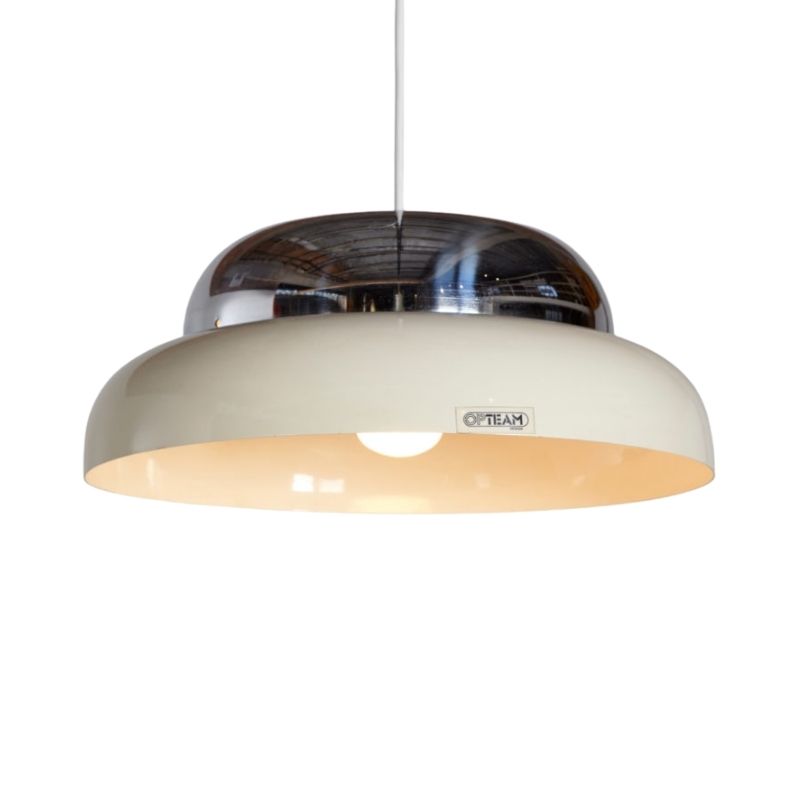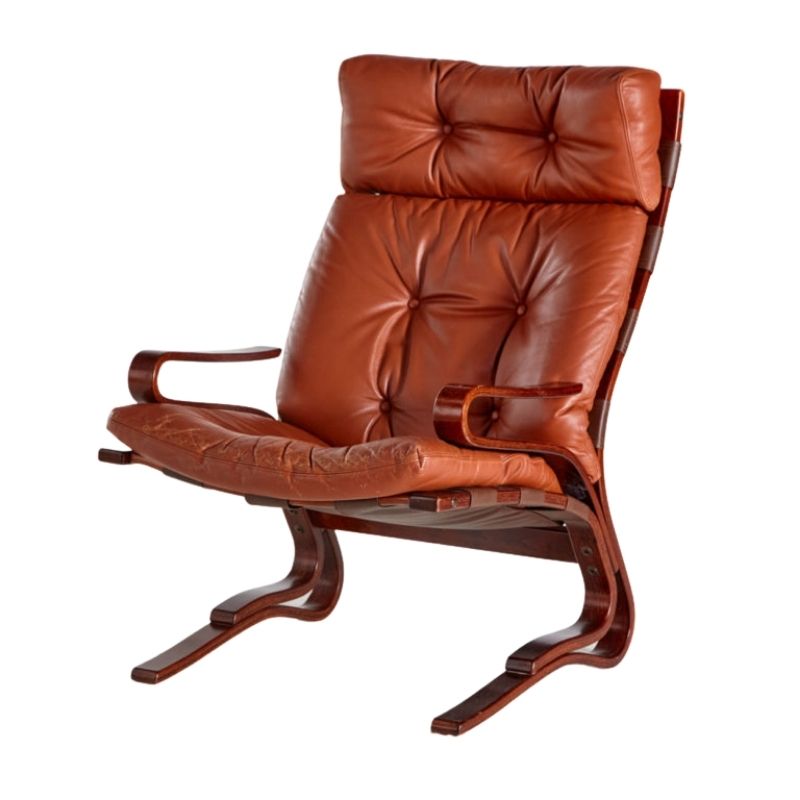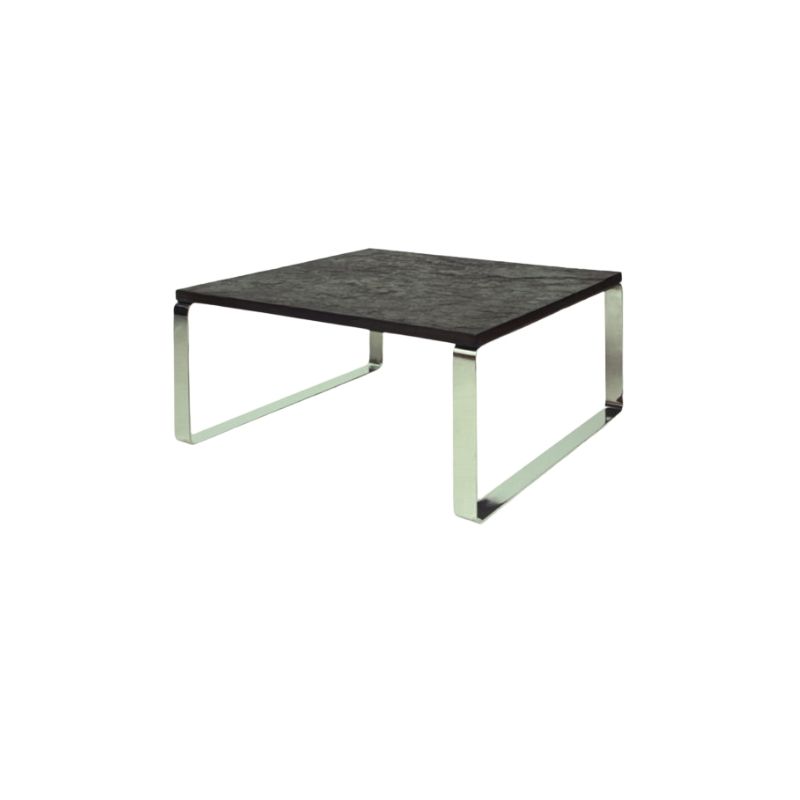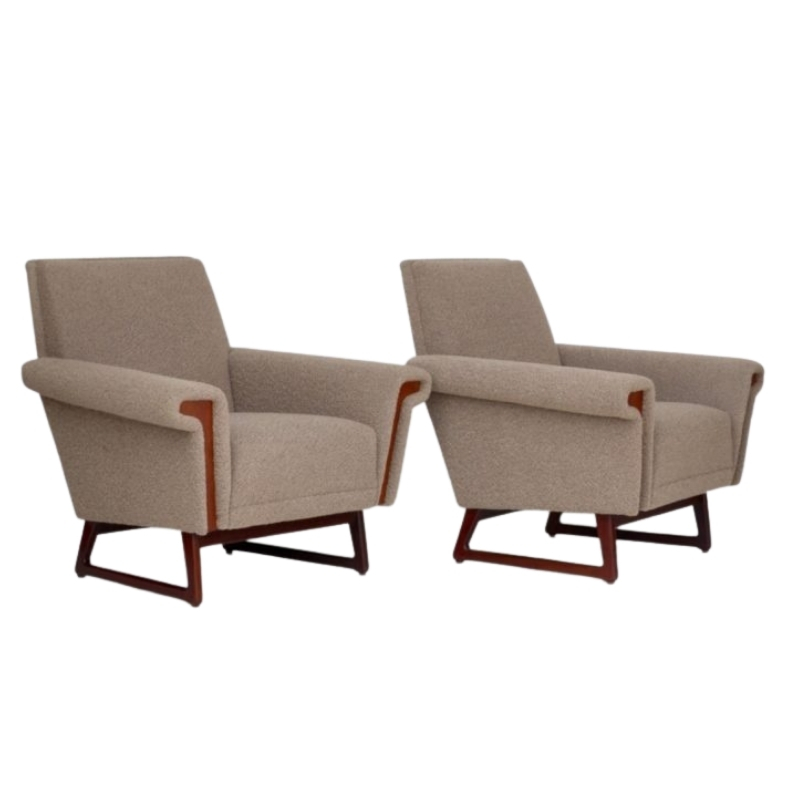A desk version of the Antony Chair. Amazing!
http://cgi.ebay.com/ws/eBayISAPI.dll?ViewItem&item=110430817767&ssPageName=STRK:MEWAX:IT

Not a fan...
It might come as a surprise to some but I am not a big Jean Prouvé fan. Most of the time his constructions are over dimensioned, the choice of materials is not always as rational as he used to pretend and the detailing is often that of an amateur welder the day after a good party. This being said I am always amazed by the influence Jean Prouvé had. This chair is a good case in point. Between this chair and the Friso Kramer or Wim Rietveld chairs there is only a small step. The interesting thing is that the difference is often: better choice of material, better dimensioned and a more consistent choice of materials and technology. Not being a fan of Jean Prouvé does not exclude me from recognizing an unusual talent.
I like one of the early...
I like one of the early tables, can't think of its name just now, but not one of the more popular ones. I'm not a great fan, either, yet I do admire the production in what I guess might be a gestalt kind of way.
An amateur welder the day after a good party, Koen, now that I will concede is a real good one!
I've wondered if maybe at least a smidge of the current Prouve appeal doesn't have to do a bit with a baby boomer kindergarten/grade school nostalgia.
Koen
Aren't the negatives you sum up also the points that give his furniture charme, and ultimately, his succes?
I do recognise the overall improvement on quality, regarding the designers you mention, but don't you find them final?
When you would place the ahrend chairs next to the prouvé one, I would choose the latter, as it creates a larger dynamic in the relation between the furniture and myself.
I am not denying the beauty and esthetic quality of Kramers designs, but I feel not challenged by them.
Question is of course if furniture has to challenge the user..
Dieter Rams designs are intended to blend in to the maximum, creating as little resistance as possible.
And I am a huge admirer of Rams and the things he delivered,
so this is a tricky one.
Dear bj
...I do not think you can raise a more difficult question in design than this one. Let me start with saying that I sympathize with your observations. Looking at Prouvé I always feel the same way. I also have to admit that I am quite ambivalent about Friso Kramer's and Wim Rietveld's chairs. As a young design student I used to work in the factory that made them (De Cirkel in Zwanenburg,Holland) long weeks of die-cutting and pressing steel is hard work especially in a "Taylorised" working environment where not only speed is important but the method leaves no room for anything but being the complement to a machine. Other than having shown some compassion with colleagues who put their fingers in the tooling just to be disabled enough to escape that pressure, I have few memories of the time. The only benefit has been a lifelong interest in how things should be designed in order to make the most boring part of the manufacturing automatically and keep the other part as interesting as possible. Late in live, but eventually that interest has turned my attention to smaller production?. and they lived happily afterwards?as goes the story. This being said, I still like the products. Your comment is of course about the role products play in our lives. Should they be beautiful...and lifeless or have character and continuously invite us to a man to object dialogue. I do not have the answer. To me the question always sounded a little bit like choosing a partner...and that's why I am leaning toward products that engage us as little as possible, products that show an inoffensive beauty that do not attract attention, not even by how intelligently they are made. In a partner or a friend, I am looking for exactly the opposite, and because of that I want to have time for them. To find intelligence beyond the surface, character and challenging ideas unrelated to appearance and looks. In order to have that time, I can't spend too much on products...
There is much more to be said, but allow me to start with this and see if we can get some heavy weights of this forum involved in the discussion. I am sure it could be very interesting.
koen favors "products that...
koen favors "products that engage us as little as possible, products that show us an inoffensive beauty that do not attract attention, not even by how intelligently they are made."
These are the very products I would submit - for at least a good bunch of us - that ultimately become the most engaging.
Just a hunch.
Bet?
I want some of both kind of products, but...
whether challenging, or unobtrusive, I can now say clearly that I want every line, every curve, every edge to be necessary, functional and beautiful simultanteously; that is my new standard of what was worth doing and was done well.
I want some buildings that make me jump out of my car and run to touch them, and eye them from every possible perspective, and yearn to walk around in them in awe.
But most buildings I want to be unobtrusive and just work exceptionally well at channelling me where I need to be, and at letting me feel comfortable, and warm and peacefully secure (as opposed to police/military security).
But in either case, I want to experience the elegance of necessity, function and beauty in simultaneity in every facet of construction that I interface with.
I do think a humane architecture would lean heavily in the diection Koen suggests. By this, I mean it would lean heavily toward enabling us all to experience the wonders of joys of human interaction, while calming and smoothing and cushioning us from some of the rough, abrasive edges of it. Put another way, I do not want architecture and artifacts to distract me from human beings. I want it to enable my experience of them.
Don't glorify ideals and ideologies with architecture so much as enable human interaction regarding those ideals and ideologies.
And finally, dear god, let space increasingly be a continuity from inside to out and outside to inside, so that realities of outside and inside interpenetrate and bring our buildings, and ourselves, into a new equilibrium of inner and outer worlds.
You make a good point there,...
You make a good point there, Koen. Sorry for my late answer, it has been busy lately.
I'm trying to produce a consistent view on this, but every idea that come to mind gets counterpointed by another.
I guess this reflects the duality you already stated...
An opportunity has presented itself to me, maybe it will change my ideas on the matter. I'll come back on this as soon as possible.
If you need any help, please contact us at – info@designaddict.com









